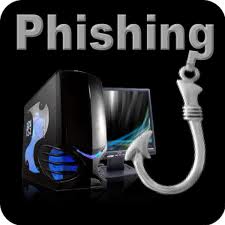|
||||||
|
||||||
|
||||||
|
||||||
|
||||||
|
||||||
|
||||||
|
||||||
Nigerian scam >> Phishing safeguard Measures
Phishing safeguard Measures
If you are an Internet Banking client, you almost certainly conscious of phishing. If you are exciting with the liability on edifice and operating an e-commerce request, phishing may be one of your Top 3 concern. Data points to that more than 1000 phishing attack are launched every month. To reduce crash of phishing attacks we need to come across at guard, detection and response measures. Some measures to explore include:
1. What can we do to save my users from falling prey to phishers? [Protection]
2. How do we sense when a phisher is building a fake website and communicating to users? [Detection]
3. What can we do to minimize the impact once a successful phish has been launched? [Response]
1. What can we do to save my users from falling prey to phishers? [Protection]
2. How do we sense when a phisher is building a fake website and communicating to users? [Detection]
3. What can we do to minimize the impact once a successful phish has been launched? [Response]
Civilizing Site legitimacy
The source of the phishing difficulty is those users are not able to recognize if the website is original or fake. Looking at the URL and SSL certificate cautiously can really help but not all users have the time or technical skill to investigate and make the correct decision.
One technique is to personalize the login page for each client. We do the login in two stages. First the user enters only the user-id and not the password. Once user-id is submitted, server returns a page where user gets to see an image which he had chosen at time of registration. If the image is corresponding he supplies the password and all is fine. If the image is not being shown it raises an alert and customer does not provide the password. Phisher doesn't know which image to display in this intermediate page. Yes it depends on user being alert. Can a phisher setup a phishing site that acts like a man-in-the-middle - intercept the user-id, send to original site and fetch the image, send image back to user and get the password. Yes, it is theoretically possible.
One technique is to personalize the login page for each client. We do the login in two stages. First the user enters only the user-id and not the password. Once user-id is submitted, server returns a page where user gets to see an image which he had chosen at time of registration. If the image is corresponding he supplies the password and all is fine. If the image is not being shown it raises an alert and customer does not provide the password. Phisher doesn't know which image to display in this intermediate page. Yes it depends on user being alert. Can a phisher setup a phishing site that acts like a man-in-the-middle - intercept the user-id, send to original site and fetch the image, send image back to user and get the password. Yes, it is theoretically possible.
One-time passwords
The user requires a login-id/static password [often called PIN] and an active one time password for thriving login. This one time password is generated on hardware token [or a software token] provided to each user. These tokens routinely produce a new one-time-password every 60 seconds.
Users will still get trick into given that their passwords at the phishing site. But these passwords are only valid for 60 seconds. If the phisher is not able to use it in near-real-time [within 60 seconds] the stolen password is useless. However, as was confirmed freshly, phishers are receiving more real-time..
On the other hand, as a substitute of supplying tokens to users, the server can produce the one-time password. Once the login/static-password is validate the one time password can be generate by server and SMSed to user's cell phone. This nearly prevents phishing attacks because attackers can never receive this SMS
Users will still get trick into given that their passwords at the phishing site. But these passwords are only valid for 60 seconds. If the phisher is not able to use it in near-real-time [within 60 seconds] the stolen password is useless. However, as was confirmed freshly, phishers are receiving more real-time..
On the other hand, as a substitute of supplying tokens to users, the server can produce the one-time password. Once the login/static-password is validate the one time password can be generate by server and SMSed to user's cell phone. This nearly prevents phishing attacks because attackers can never receive this SMS
Having separate login and contract password
Very related for banking and financial sites. This will make certain that even if login password is lost to phisher, transactions cannot be made.
Again we are not cutback the users from being victims of phishing. We are just ensure that even if the login password is missing, attacker can login and see the account details but cannot do something like a fund transfer without significant the transaction password. If the user has kept both passwords the same then there is no protection at all. Alternatively a onetime transaction password can also be generated vigorously by server and SMSed to user.
Again we are not cutback the users from being victims of phishing. We are just ensure that even if the login password is missing, attacker can login and see the account details but cannot do something like a fund transfer without significant the transaction password. If the user has kept both passwords the same then there is no protection at all. Alternatively a onetime transaction password can also be generated vigorously by server and SMSed to user.
Personalize email communication
Phishing starts with an email. How will users distinguish a phishing mail from an authorized one? If we can personalize certified emails and comprise some details which phishers will never have access to, there is good quality chance users will recognize the phishing mail which doesn't have any of these. Some details that could be included in email communications are Customer's full name and last 4 digits of his account number
User education
Conceivably the best guard mechanism but the hardest one to realize. If we can instruct user about how to perceive a phishing mail/site and how to steadily contact the website, a lot of phishing attacks will not succeed. Getting the user's concentration to these security tips and advice is demanding. We could put this up on our login page or send it as emails. The method varies depending on the type of business and channels available to reach the user.
4 guidelines For Phishing avoidance
Tip 1 It is significant that you learn to distinguish all types of phishing emails. You should create manually alert that if you obtain a message which needs you to take instant action with observe to any of your personal accounts then avoid it like the outbreak. Most phishing emails will be address to either "Dear Valued Customer" or "Dear Sir/Madam", while any genuine emails from your bank or Credit Card Company will be address to you by name. It is chief to know that the phisher who has sent the email in the first place is after your personal information in order to use it for deceitful purpose.
Tips 2 Never ever throw any sort of susceptible personal information using an email. Emails are not the most locked form of communication available for people to use on the Internet. Positively many scammers are rather able of producing an email that looks legitimate and so will be simply able to copy such a document and then gain your information in this way.
Tip 3 if you do have to put out any personal information over the Internet then make sure that the site you are given that it to is wholly protected. The finest way for a person to recognize if a site is secure or not is by looking at the site address. All sites which are considered to be sheltered should start with "https://" and not "http://". Also if you look in the browser status bar you will see the padlock icon being displayed.
Tip 4 If you still obtain an email from someone you do not know and it contain a link contained by it then do not click on it. Quite what you should be doing is cavity up a new browser page and then type in the address which you know to be the genuine one. Or else you could call the personality or company directly if you have had transactions with them and have spoken with them by telephone before.
Tip 3 if you do have to put out any personal information over the Internet then make sure that the site you are given that it to is wholly protected. The finest way for a person to recognize if a site is secure or not is by looking at the site address. All sites which are considered to be sheltered should start with "https://" and not "http://". Also if you look in the browser status bar you will see the padlock icon being displayed.
Tip 4 If you still obtain an email from someone you do not know and it contain a link contained by it then do not click on it. Quite what you should be doing is cavity up a new browser page and then type in the address which you know to be the genuine one. Or else you could call the personality or company directly if you have had transactions with them and have spoken with them by telephone before.

|
||||||
|
||||||
|
||||||
|
||||||
|
||||||
|
||||||
|
|
||||||
Nigerianspam.com is dedicated to all the hardworking people who have been scammed by the spammer or 419 scam frauds. Although our site concentrates on providing awareness of Nigerian 419 spam (scam), scam baiting, advance fee fraud, scam phising, also we deal with other types of fraud such as letter spam, e-mail scam, lottery spam as well. You can go through our scam baiting tips, it is just amazing way to deal with the spammer or scammer.
Nigerian Scam | 419 Scam | Features of Scam | Mission | Research | Mail Archives | About Us | File A Complaint | Spam News | Origin Of Scam | Operation Of Scam | Consequences | Miscellaneous Scams | Scam Sites | FAQ | Contact Us | Scam Resources Links | Nigerian Scammers | Site Map | Mail Archives SiteMap | Scam Glossary | Scam Resources Books | Scam Checker Tool | Scam baiting | More Scam Sites | Scam Awareness Quiz | Celebrity Scam | Search Engine Genie | Bharat Udyog Ratna Award Scam Alert | Jeff Adams Real Estate Seminar | Russ Whitney Real Estate








